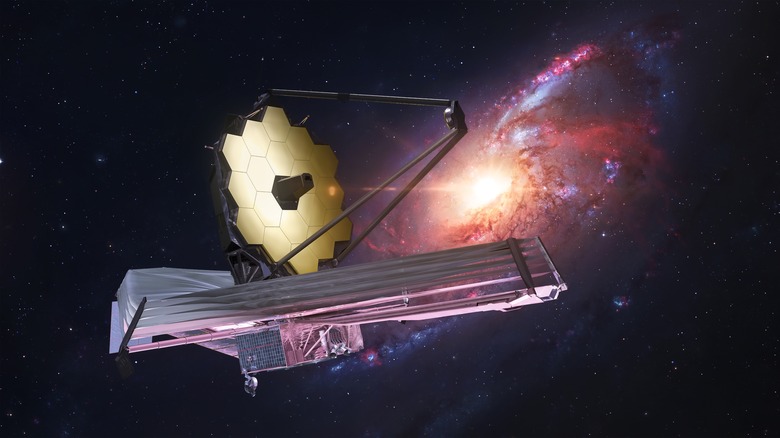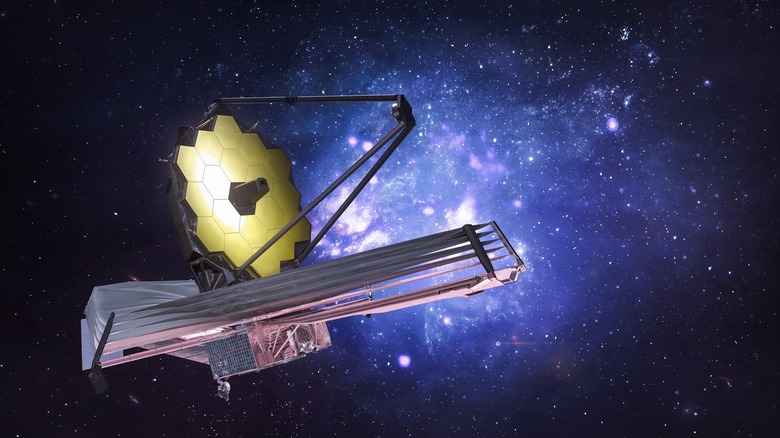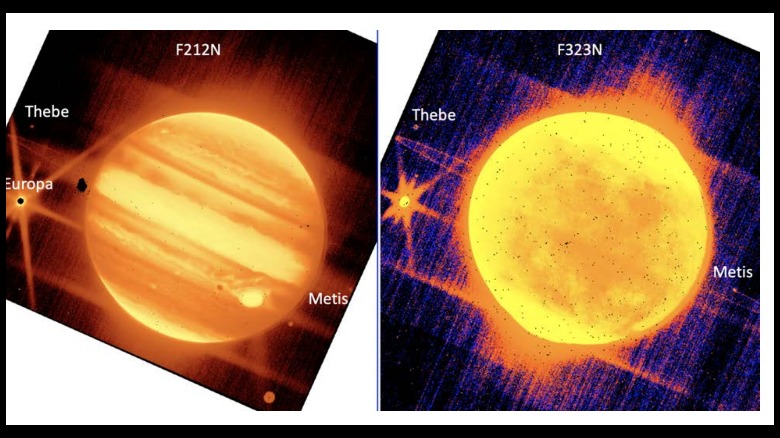James Webb Can Also Be Used To Study Our Solar System
Less than a week ago, the internet was set ablaze when NASA released the first of the amazing images captured by NASA's James Webb Space Telescope. Put into orbit in December 2021, the James Webb Space Telescope is the largest and most powerful space telescope made by man. While physically smaller and lighter than the Hubble Space Telescope, the primary mirror in the James Webb Space Telescope is six times larger than the ones used on Hubble.
Combined with larger mirrors and improved sensitivity to infrared waves, the James Webb Space Telescope can look much farther into space than any telescopre before. In fact, NASA has confirmed that it is capable of viewing objects that are too faint for even Hubble to detect. NASA is hopeful of using the James Webb Space Telescope to conduct a wide array of cosmic investigations ranging from detecting potentially habitable planets to observing the births of the first galaxies and stars of the universe.
Given that most of the publicly available images captured by the James Webb telescope belonged to distant galaxies, many people were surprised when NASA recently released a fresh set of images showcasing objects much closer to Earth. The newest pictures, in particular, talk about Jupiter, the largest planet in our solar system, and some of its moons.
Not your average space telescope!
The latest set of pictures sent by the James Webb Space Telescope to Earth shows detailed shots of Jupiter's massive cloud bands that dominate its upper atmosphere. In some of the pictures, it is possible to make out several physical attributes of the planet — including the Great Red Spot and the faint ring system that encircles the planet.
Other things visible in the image include some of Jupiter's Moons, including Europa, Thebe, and Metis. For those unaware, Europa is a large moon of Jupiter, which is a potential target for future human exploration. Previous studies have also established that this moon has a massive ocean hidden under its thick, icy shell.
While these images may not look as spectacular as the ones we saw initially, NASA scientists are thrilled. Stefanie Milam, who is a planetary scientist at NASA's Goddard Space Flight Center, said she was left amazed at the brightness and clarity of the images captured by the James Webb Space Telescope. Milam was particularly impressed by the fact that the telescope captured the faint rings of Jupiter in its first attempt.
In addition to observing large celestial bodies like Jupiter and its moons, the telescope also underwent trials to see how well it performs while dealing with fast-moving objects. According to Milam, the telescope passed this test with outstanding scores. Meanwhile, Bryan Holler, a scientist at the Space Telescope Science Institute in Baltimore, believes that all images released by NASA showcase the sheer versatility of the James Webb Space telescope.


